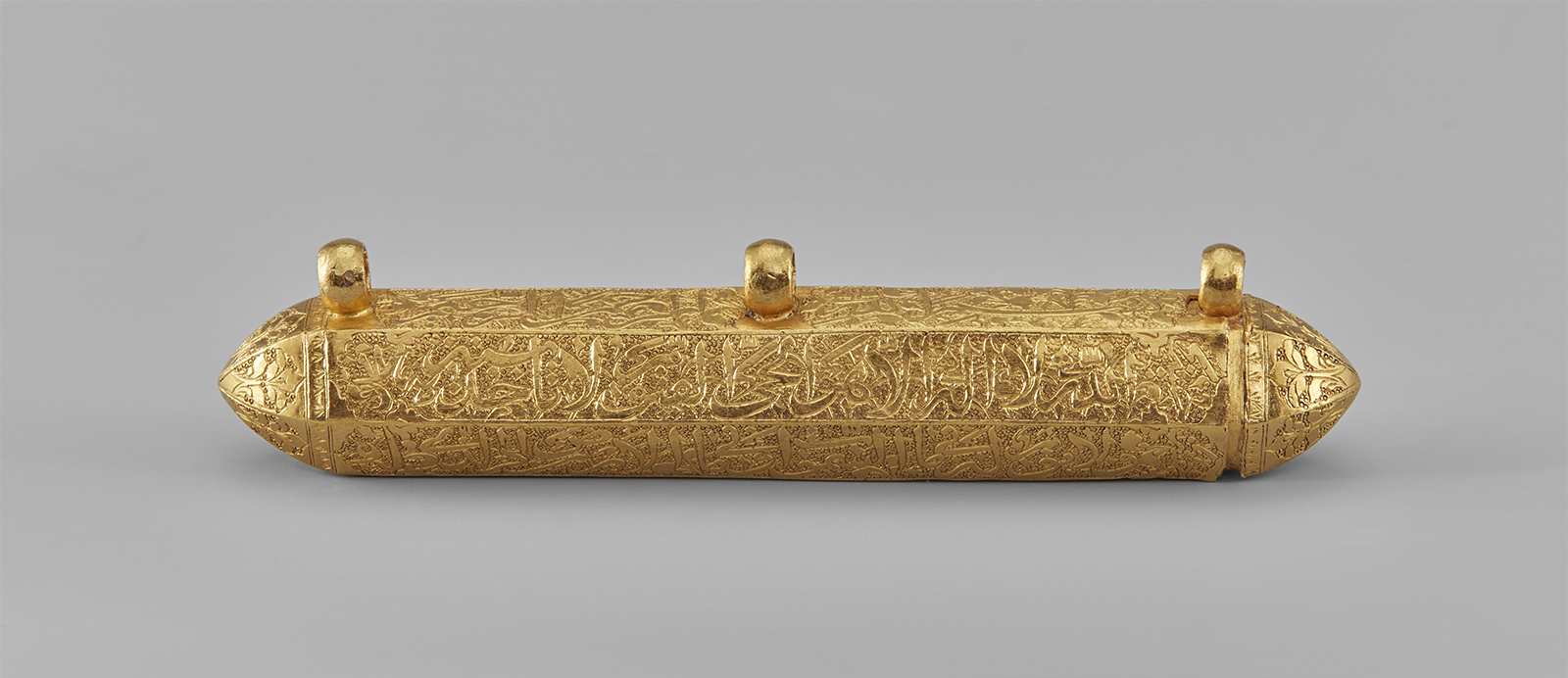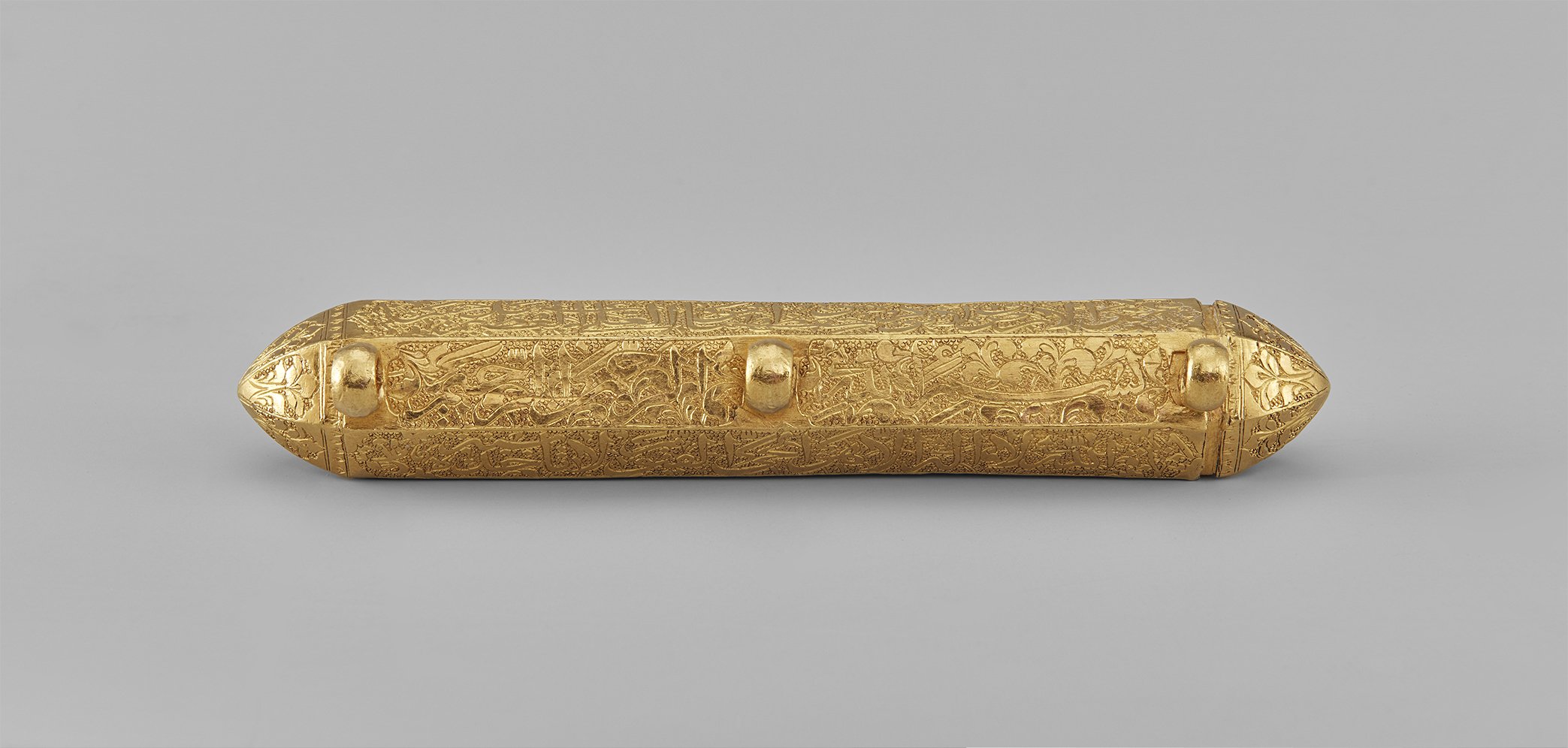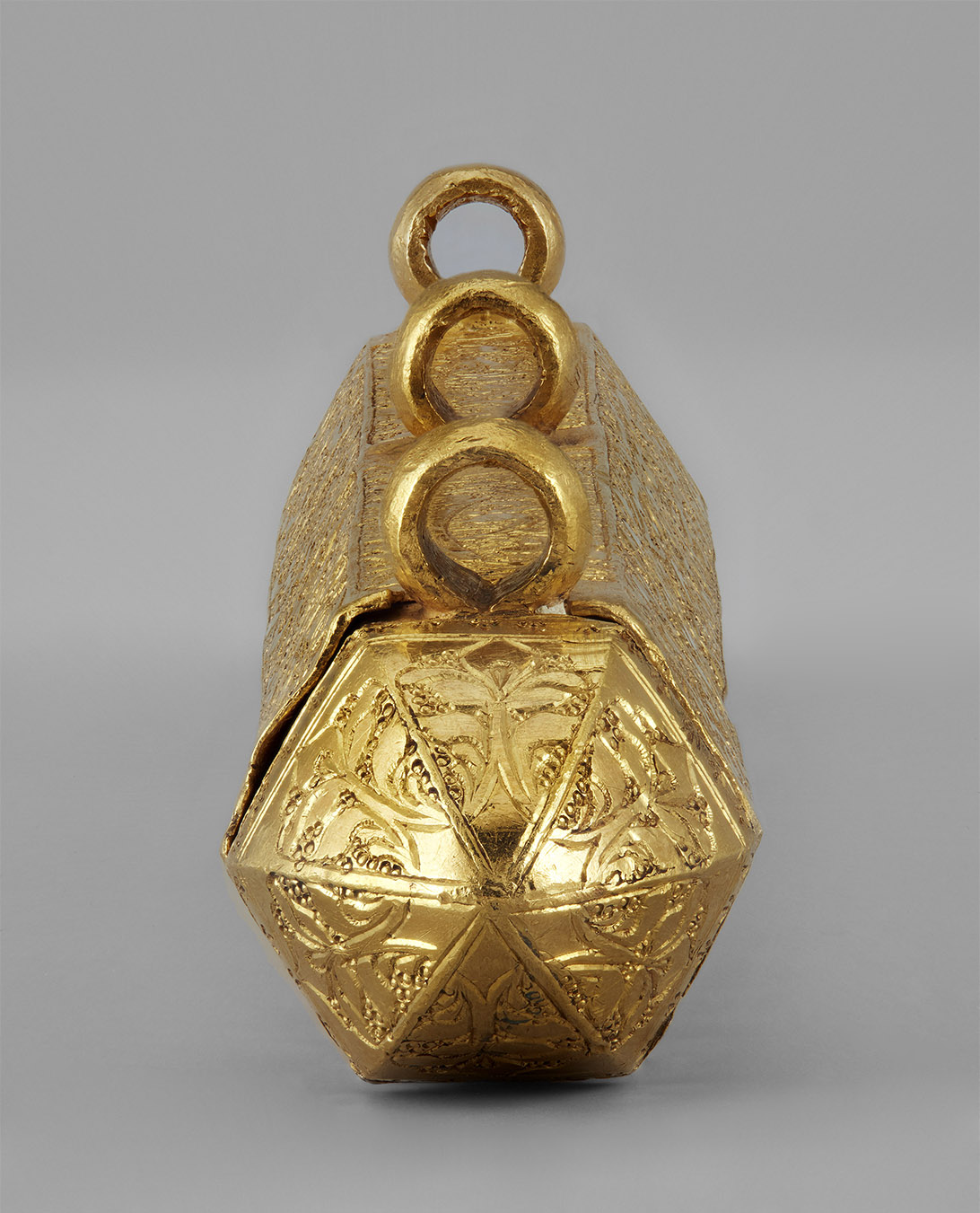Click on the image to zoom
Gold Amulet
- Accession Number:AKM624.2
- Place:Iran
- Dimensions:Length 8.5 cm
- Date:19th century
- Materials and Technique:gold, chased and hammered
This gold amulet has suspension loops from which it would have been attached to a chain or cord and worn around the neck or secured to a belt. It is inscribed with Qur’anic verses [1] selected to provide Baraka or “blessing” on the wearer. The amulet’s elongated shape indicates that a piece of paper rolled as a scroll may have been kept inside the body of the amulet. The text likely would have included Qur’anic verses written in tiny ghubari, or dust script. In this manner, the words of God, expressed through holy verses covering the boxes as well as the sacred texts held inside, acted as fortification from malice, ill fortune, sickness, and enemies. The amulet therefore served as a portable talisman.
See AKM624.1
Further Reading
While such amulets are known from the very early Islamic period, this example in the Aga Khan Museum Collection dates to the 19th century. It was created in Iran under the Qajar dynasty (1779–1924), a transitional era which produced works of art that were both traditional and modern. Spanning nearly a century and a half, the Qajar Dynasty bridged the gap between the largely tribal society of the 18th century and a modern centralized rule in Tehran. The formation of the dynasty in 1779 brought an end a long period of political instability that had gripped the region since the fall of the Safavid Empire in 1722. Art produced during the Qajar period is heavily influenced by Europe, and this is especially seen in portrait painting from the era (see AKM276). Many artists, however, continued to work in traditional and revivalist styles. The present amulet is a direct continuity of a tradition expressed in Islamic art for hundreds of years.
A closely related object in the Aga Khan Museum Collection, a miniature gold Qur’an box (AKM624.1), was also produced in the 19th-century Qajar period. Though these objects were likely worn and used separately, they may also have been attached and worn together, as indicated by a similar pairing of objects sold at Christie’s London in 2010.[2]
The present object, worked in gold, is a unique example of the riches of the elite members of the Qajar dynasty. This important gold case and its now-lost contents today reveal the beliefs and tastes of 19th-century Iran.
— Courtney Stewart
Notes
1. The amulet is inscribed with Qur'an, Chapter 2, verse 255 and the names of: Muhammad, 'Ali, Fatima, Hasan, and Husain.
2. Christies, Indian and Islamic Works of Art, 16 April 2010, Lot 482 https://www.christies.com/lotfinder/Lot/a-qajar-repousse-gold-talismanic-amulet-case-5304646-details.aspx.
References
Aga Khan Trust for Culture, Spirit & Life: Masterpieces of Islamic Art from the Aga Khan Museum Collection. London: Aga Khan Trust for Culture, 2007. ISBN: 9783894796037
Al-Saleh, Yasmine. “Amulets and Talismans from the Islamic World.” In Heilbrunn Timeline of Art History. New York: The Metropolitan Museum of Art, 2000. http://www.metmuseum.org/toah/hd/tali/hd_tali.htm
Bromer, Anne and Julian I. Edison. Miniature Books: 4,000 Years of Tiny Treasures. New York: Abrams in association with the Grolier Club, 2007. ISBN: 9780810992993
Diba, Layla S., ed. Royal Persian Paintings: The Qajar Epoch, 1785–1925. Exhibition catalogue. Brooklyn: Brooklyn Museum of Art, 1998. ISBN: 9781860642555
Ekhtiar, Maryam and Rachel Parikh. “Power and Piety: Islamic Talismans on the Battlefield” Digital Catalogue. New York: The Metropolitan Museum of Art, 2017. https://metmuseum.atavist.com/powerandpiety
Porter, Venetia “Islamic Seals: Magical or Practical?” In Magic and Divination in Early Islam. Ed. Emilie Savage-Smith. London: Ashgate Publishing, Ltd., 2004. ISBN: 9780860787150
Note: This online resource is reviewed and updated on an ongoing basis. We are committed to improving this information and will revise and update knowledge about this object as it becomes available.








